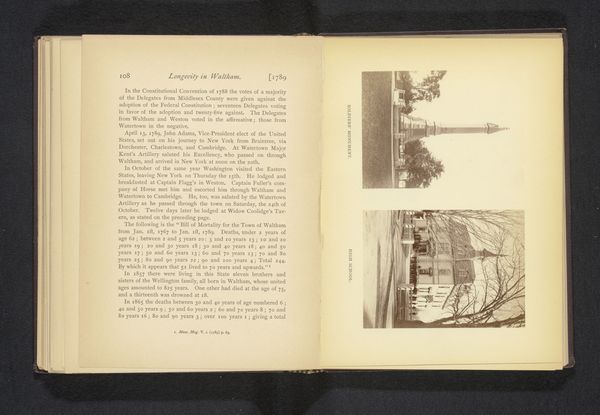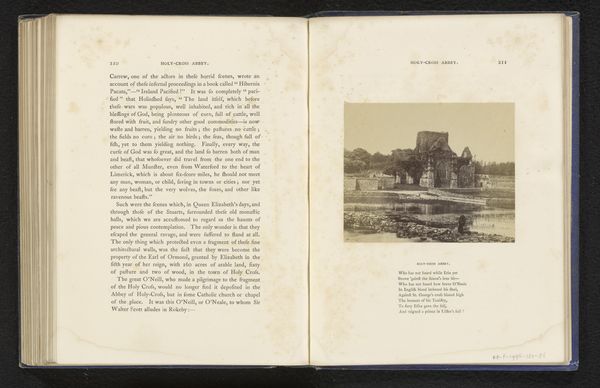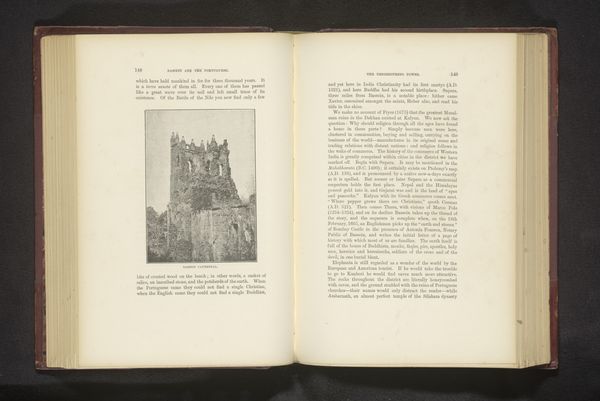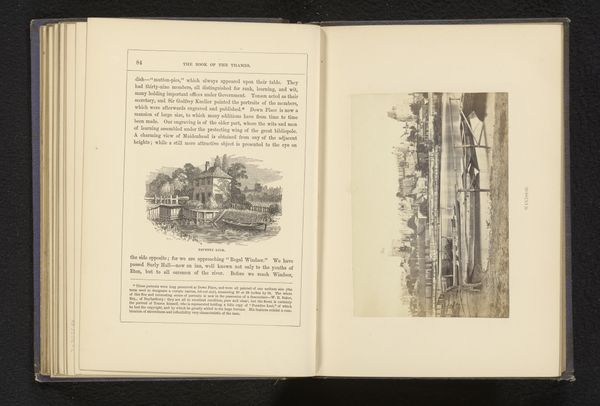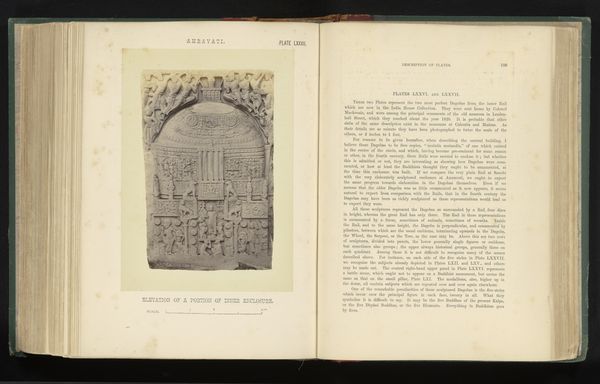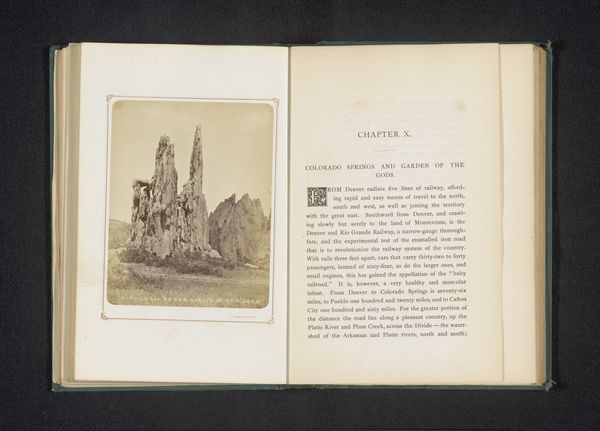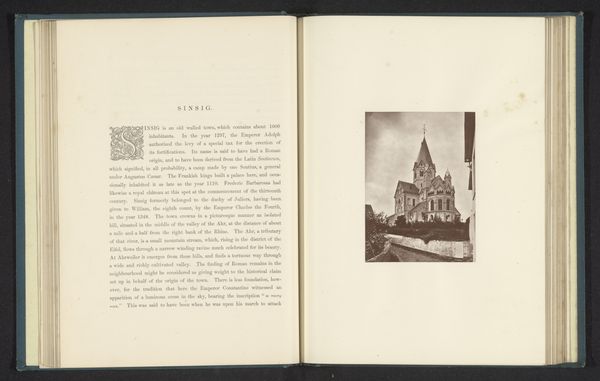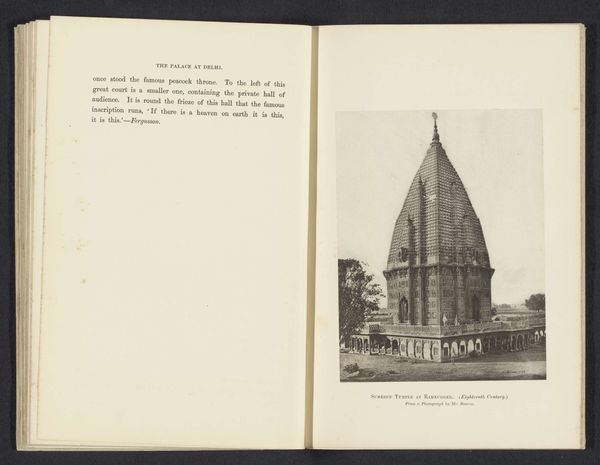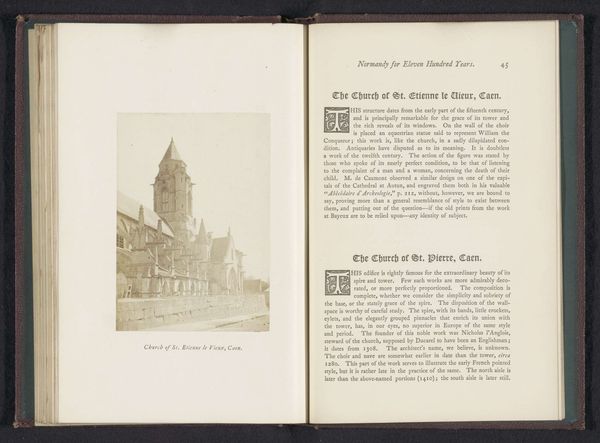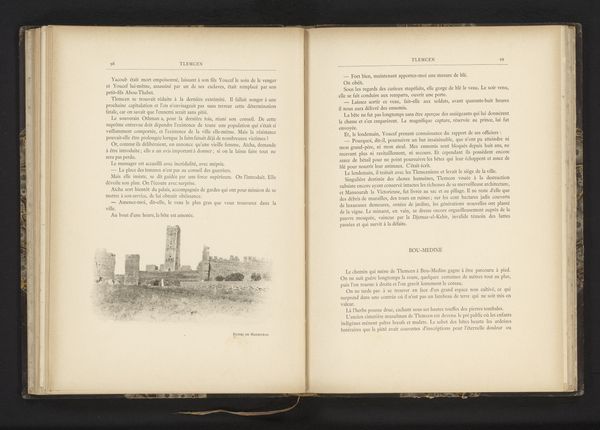
print, photography, architecture
#
script typeface
#
aged paper
#
homemade paper
#
medieval
#
paperlike
# print
#
sketch book
#
landscape
#
photography
#
personal sketchbook
#
hand-drawn typeface
#
thick font
#
handwritten font
#
architecture
#
historical font
Dimensions: height 82 mm, width 62 mm
Copyright: Rijks Museum: Open Domain
Editor: This is a page from what seems to be an old sketchbook or perhaps a travel journal. On the left is a photograph of the Round Tower at the Rock of Cashel, predating 1864. The sepia tones and aged paper give it a very historical, almost melancholic, feeling. What strikes you most when you look at this image? Curator: I'm drawn to the dialogue between the structure itself and the printed word surrounding it. The photograph, with its crisp, objective depiction of the tower, is framed by subjective interpretation in the form of handwritten script and printed typeface. The photograph shows the architecture, but the written words imbue the monument with layers of historical narrative and personal association. It suggests the monument isn’t just stone but an idea, a touchstone for memory. Editor: So, you are saying that the text turns the building into a symbol? Curator: Exactly! Note the description mentioning “ancient Christians”. It is suggesting this tower represents continuity – a steadfast link to the past. Also, consider how the tower itself acts as a visual marker. Verticality is powerful. Towers, historically, suggest a connection between the earthly and the divine. Here, the tower visually anchors Ireland to its ancient past and religious heritage. Doesn’t the text actually explain what those might be? Editor: It mentions a theory connecting the tower to worshippers of fire, which seems like a speculative claim even by the author! But the journal also talks about its possible use as a watchtower. Curator: Interesting – a place of both potential devotion and defense. A compelling duality that speaks to the complex role of religious structures throughout history. They serve as sanctuary and stronghold. Editor: I never considered the tower's possible defensive functions. I was so focused on its age. Curator: The layering of meaning is part of what makes the image so potent. The artist highlights this complexity, doesn’t it? By juxtaposing text and image, Hemphill asks the viewer to consider the multifaceted cultural significance of a seemingly simple structure. Editor: Now I’m also thinking about how the open book format adds another layer, contrasting public display versus private reflection. I’m walking away with more questions than answers, in a good way!
Comments
No comments
Be the first to comment and join the conversation on the ultimate creative platform.

